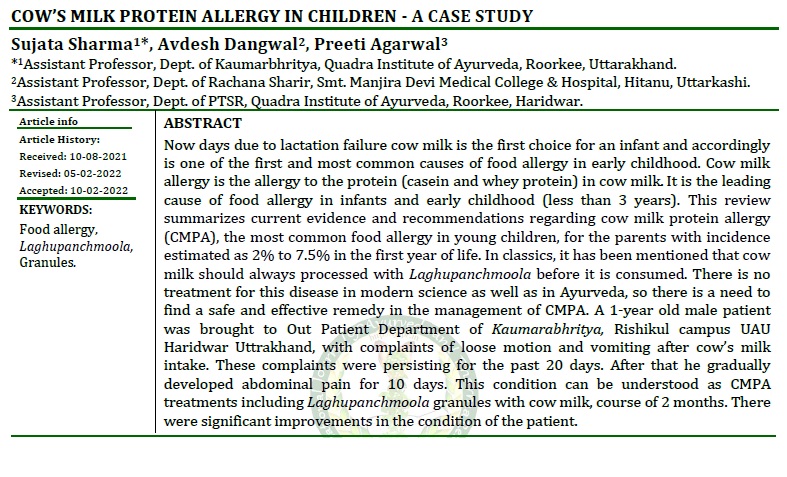Cow’s Milk Protein Allergy in Children - A Case Study
Abstract
Now days due to lactation failure cow milk is the first choice for an infant and accordingly is one of the first and most common causes of food allergy in early childhood. Cow milk allergy is the allergy to the protein (casein and whey protein) in cow milk. It is the leading cause of food allergy in infants and early childhood (less than 3 years). This review summarizes current evidence and recommendations regarding cow milk protein allergy (CMPA), the most common food allergy in young children, for the parents with incidence estimated as 2% to 7.5% in the first year of life. In classics, it has been mentioned that cow milk should always processed with Laghupanchmoola before it is consumed. There is no treatment for this disease in modern science as well as in Ayurveda, so there is a need to find a safe and effective remedy in the management of CMPA. A 1-year old male patient was brought to Out Patient Department of Kaumarabhritya, Rishikul campus UAU Haridwar Uttrakhand, with complaints of loose motion and vomiting after cow’s milk intake. These complaints were persisting for the past 20 days. After that he gradually developed abdominal pain for 10 days. This condition can be understood as CMPA treatments including Laghupanchmoola granules with cow milk, course of 2 months. There were significant improvements in the condition of the patient.
Downloads

Copyright (c) 2022 International Journal of Ayurveda and Pharma Research

This work is licensed under a Creative Commons Attribution-NonCommercial-ShareAlike 4.0 International License.






